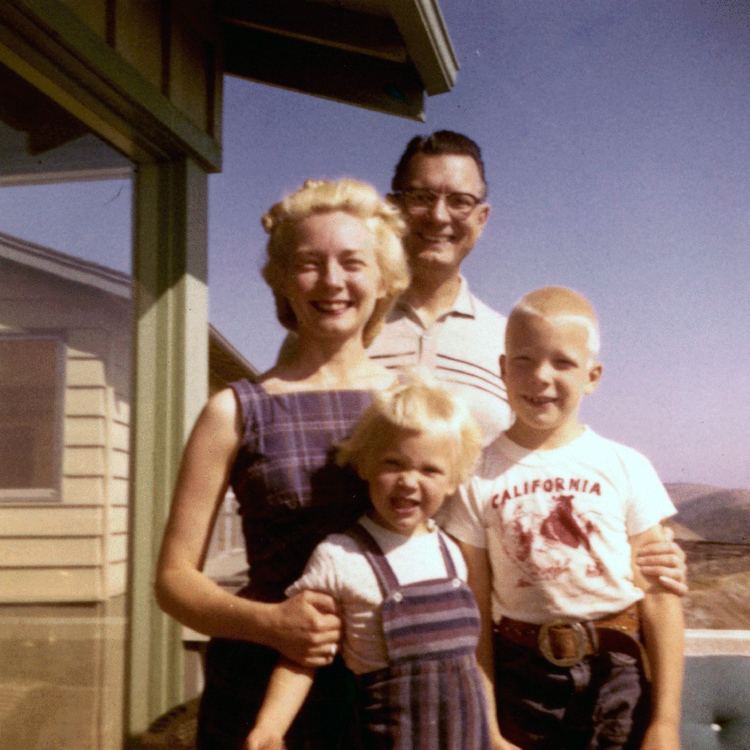 | ||
A nuclear family, elementary family or conjugal family is a family group consisting of two parents and their children (one or more). It is in contrast to a single-parent family, to the larger extended family, and to a family with more than two parents. Nuclear families typically center on a married couple; the nuclear family may have any number of children. There are differences in definition among observers; some definitions allow only biological children that are full-blood siblings, but others allow for a stepparent and any mix of dependent children including stepchildren and adopted children.
Contents
- Usage of the term
- Compared to extended family
- Changes to family formation
- North American conservatism
- References
Family structures of a married couple and their children were present in Western Europe and New England in the 17th century, influenced by church and theocratic governments. With the emergence of proto-industrialization and early capitalism, the nuclear family became a financially viable social unit. The term nuclear family first appeared in the early twentieth century. Alternative definitions have evolved to include family units headed by same-sex parents and perhaps additional adult relatives who take on a cohabiting parental role; in the latter case, it also receives the name of conjugal family.
The concept that a narrowly defined nuclear family is central to stability in modern society has been promoted by familialists who are social conservatives in the United States, and has been challenged as historically and sociologically inadequate to describe the complexity of actual family relations.
As a fertility factor, single nuclear family households generally have a higher number of children than co-operative living arrangements according to studies from both the Western world and India.
Usage of the term
Merriam-Webster dates the term back to 1947, while the Oxford English Dictionary has a reference to the term from 1925; thus it is relatively new.
In its most common usage, the term nuclear family refers to a household consisting of a father, a mother and their children all in one household dwelling. George Murdock, an observer of families, offered an early description:
The family is a social group characterized by common residence, economic cooperation and reproduction. It contains adults of both sexes, at least two of whom maintain a socially approved sexual relationship, and one or more children, own or adopted, of the sexually cohabiting adults.
Many individuals are part of two nuclear families in their lives: the family of origin in which they are offspring, and the family of procreation in which they are a parent.
Compared to extended family
An extended family group consists of non-nuclear (or "non-immediate") family members considered together with nuclear (or "immediate") family members.
Changes to family formation
In 2005, information from the United States Census Bureau showed that 70% of children in the US live in traditional two-parent families, with 66% of those living with parents who were married, and 60% living with their biological parents, and that "the figures suggest that the tumultuous shifts in family structure since the late 1960s have leveled off since 1990".
If considered separately from couples without children, single-parent families, and unmarried couples with children, in the United States traditional nuclear families appear to constitute a minority of households - with a rising prevalence of other family arrangements. In 2000, nuclear families with the original biological parents constituted roughly 24.10% of American households, compared to 40.30% in 1970. Roughly two-thirds of all children in the United States will spend at least some time in a single-parent household.
In the UK, the number of nuclear families fell from 39.0% of all households in 1968 to 28.0% in 1992. The decrease accompanied an equivalent increase in the number of single-parent households and in the number of adults living alone.
According to some sociologists, "[The nuclear family] no longer seems adequate to cover the wide diversity of household arrangements we see today." (Edwards 1991; Stacey 1996). A new term has been introduced, postmodern family, intended to describe the great variability in family forms, including single-parent families and couples without children."
Professor Wolfgang Haak of Adelaide University, detects traces of the nuclear family in prehistoric Central Europe. A 2005 archeological dig in Elau in Germany, analyzed by Haak, revealed genetic evidence suggesting that the 13 individuals found in a grave were closely related. Haak said, "By establishing the genetic links between the two adults and two children buried together in one grave, we have established the presence of the classic nuclear family in a prehistoric context in Central Europe.... Their unity in death suggest[s] a unity in life." This paper does not regard the nuclear family as "natural" or as the only model for human family life. "This does not establish the elemental family to be a universal model or the most ancient institution of human communities. For example, polygamous unions are prevalent in ethnographic data and models of household communities have apparently been involving a high degree of complexity from their origins." In this study evidence suggests that the nuclear family was embedded with an extended family. The remains of three children (probably siblings based on DNA evidence) were found buried with a woman who was not their mother but may have been an "aunt or a step-mother".
North American conservatism
For social conservatism in the United States and Canada, the idea that the nuclear family is traditional is an important aspect, where family is seen as the primary unit of society. These movements oppose alternative family forms and social institutions that are seen by them to undermine parental authority.
